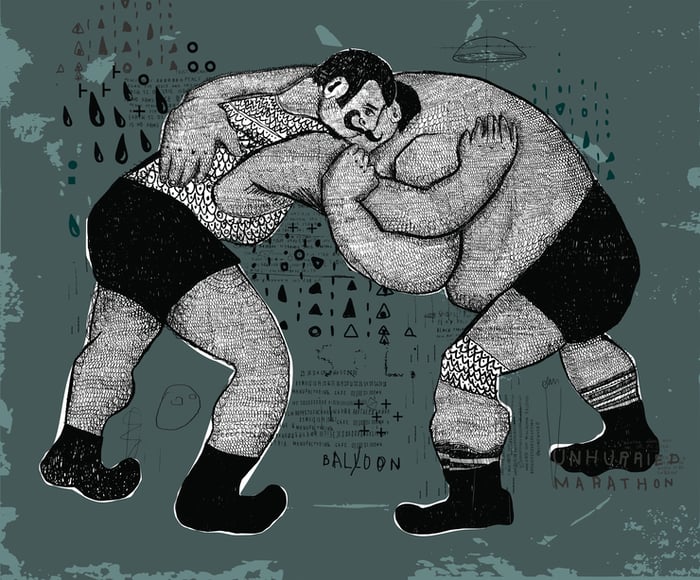"Is it a 'people' problem or a process problem?"
This is the question my manager asked me on one of my first consulting gigs as a CPA, almost 15 years ago. I was spending several hours a week on-site at a small manufacturing client. During a debriefing session back at the office, I tried to describe for my manager the almost unbearable tension I was witnessing between the sales and production departments.
With the help of a few probing questions, my supervisor helped me suss out that it was a bit of both problems. The sales team needed to hit its year-end targets and was uncomfortably behind. The team had obtained an authorization from management to steeply discount the company's products to create incentive for deal closings, and a green light to promise faster shipping dates. Production was rightfully worried about both the pressure to manufacture profitably and to make looming tight deadlines.
Existing personality differences flared as the two departments wrestled with conflicting objectives. In reality, the problems were the extended fruit of management's failure to update its product lines, and they didn't arise overnight.
The framing question of people or process has stuck in my mind over the years. Now with my own consulting practice, I often run it through my head as I listen to a client express the biggest pain point driving his or her consulting need.
This tiny analysis tool is especially useful when thinking about conflict. As an entrepreneur, you may not love the idea of conflict, but you probably know it's inevitable. Small-business owners deal with conflict daily, and it manifests in several forms, and between many different players -- from employees to suppliers, customers, and other third parties.

Image source: Getty Images.
Why would you seek to become a scholar of conflict within your organization? More often than not, the tacit disagreements, disputes, and outright run-ins that occur between employees, or between employees and external parties, reveal important truths about your enterprise.
If you've spent time to hire the right people for your organization, and you've been firm about removing those who don't fit with the company culture, you've probably already either precluded or weeded out the conflict-prone from your company. Thus, what emerges as visible, problematic issues are central to the discipline of making your business better.
The Gemba, and the skill of observation
The Japanese management philosophy of kaizen, or continuous improvement, seeks to improve manufacturing efficiency by reducing error and waste. In kaizen, the workplace, or literally, the "place where the work happens," is known as the gemba. Commonly, the gemba is the factory floor in a manufacturing facility. A manager who employs the techniques of kaizen takes a walk through the gemba to notice what is contributing to success, but, more pertinently, to understand where the waste is occurring.
For example, in a "gemba walk," a manager may observe that two machines that perform successive operations on materials should be moved closer together, to save time and speed up production.

Perhaps your gemba looks like this. Image source: Getty Images.
The concept of the gemba has been applied to many different environments outside manufacturing. In your business, the gemba may simply be your office environment. You can apply the principles of gemba observation to both the general mood and morale in your workplace, and more specifically, to the conflicts that arise within.
Observing the tensions that lead to conflict illuminates wrinkles in your business strategy and financial performance. Are direct reports bumping heads on how to execute current strategy? Maybe you didn't outline the vision as clearly as you thought in your yearly planning.
Conversely, is it a bit too quiet in the office, with so little lack of tension that in fact people seem bored? This can be symptomatic of a host of problems, from low morale to an impending drop in sales.
Of course, sometimes conflict within your team is just where it needs to be. Passionate argument over resources, say a business line your company may soon drop, can bring resolvable margin issues to the forefront. In such cases as well, hone your skill of observation, and couple it with reflection and analysis.
Abnormal and subnormal conflict
One of the principles underlying a gemba walk, and kaizen in general, is the polite, objective, and respectful attitude of managers to employees when asking questions about observed processes. This mindset comes in handy in those instances involving verbal abuse, physical intimidation, or altercation, where conflict must be dealt with immediately and resolved.
Try to always remain calm, impartial, and firm as a manager. When conflict escalates, your duty is to defuse a situation that's exceeded any acceptable norm, without becoming part of the conflict yourself. But here, too, spend time afterward in reflection -- conduct a post-mortem both on the event and its underlying causes.
I have a final word of caution to offer on the opposite end of the spectrum. Avoid going out of your way to reduce conflict in your organization to the extent that it's rarely felt or seen. Some owners have an over-enthusiasm for harmony, but this can stifle employees' reasonable daily search for accountability. In successful business organizations, elevating accountability fosters healthy differences which employees will often resolve on their own. And accountability in the long run is far more important than perfect equilibrium, or the invisibility of conflict.






